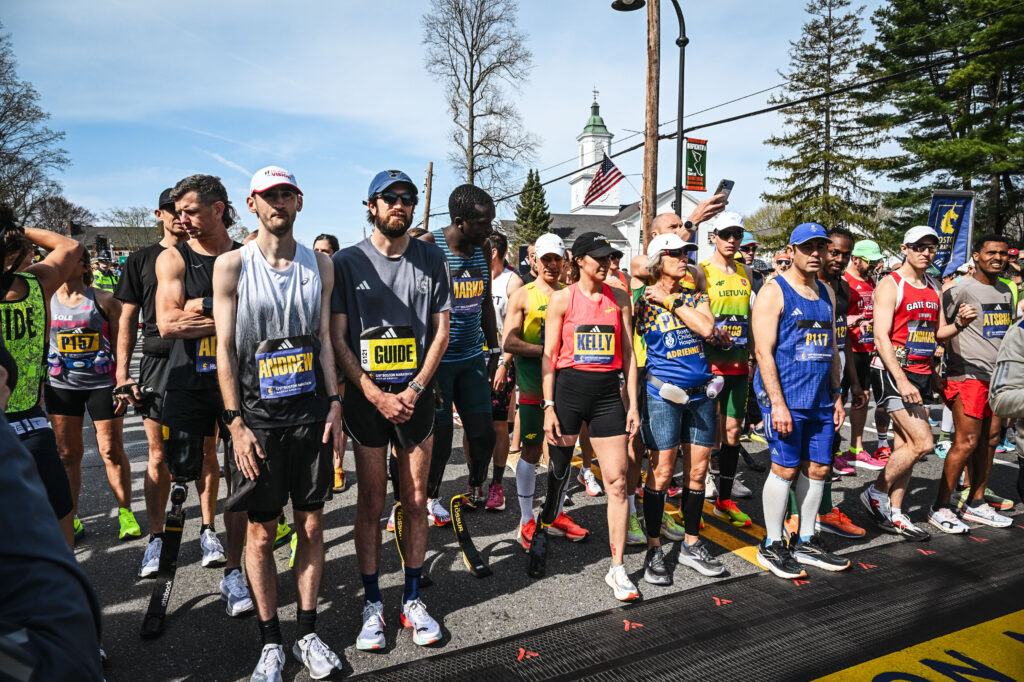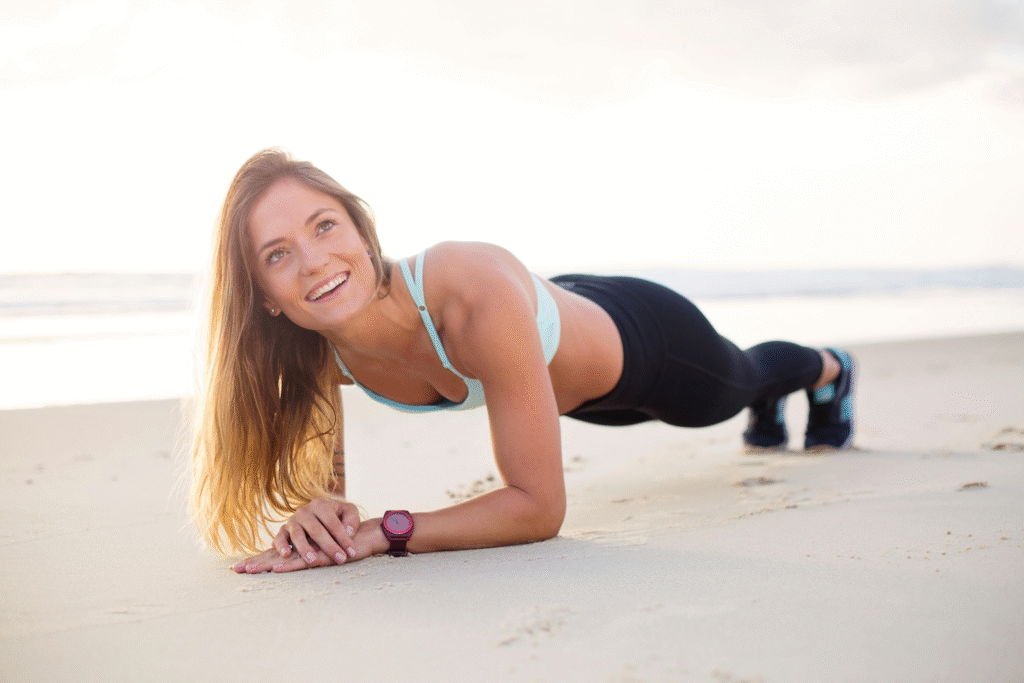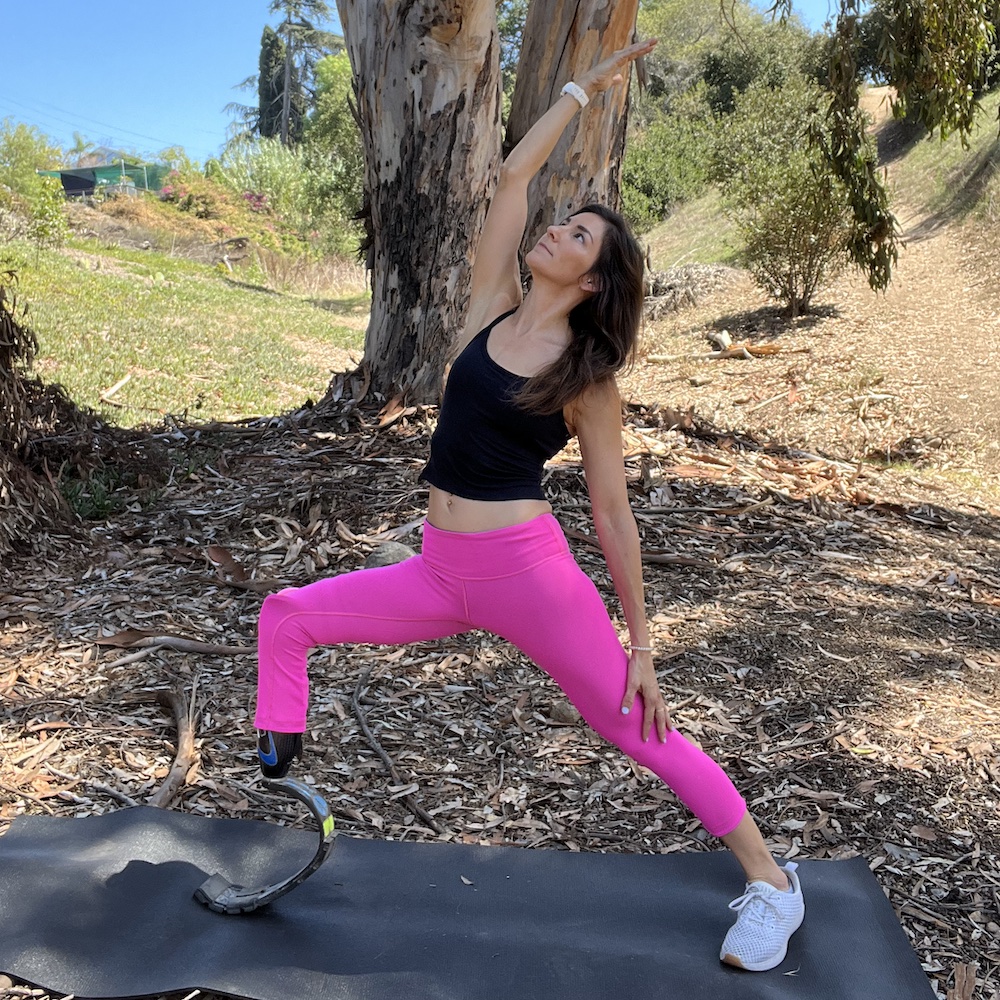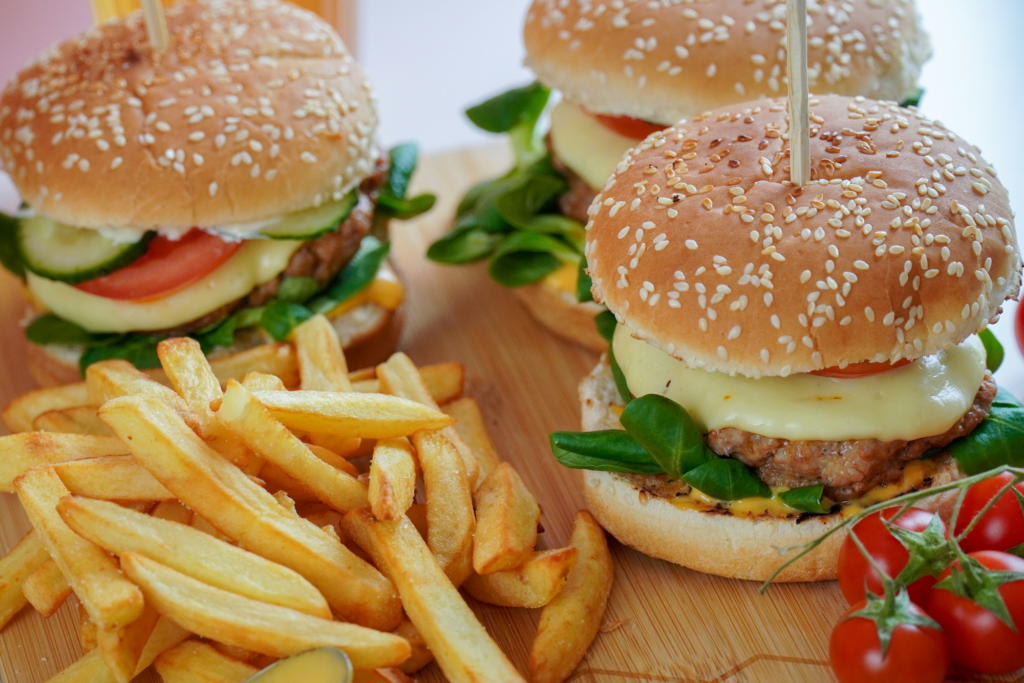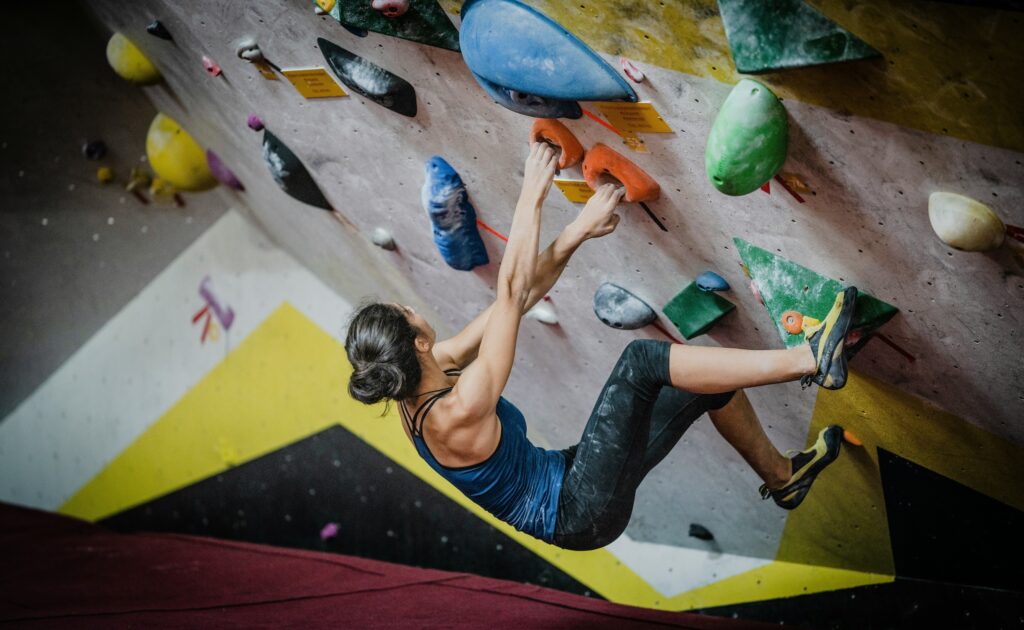Breaking the 3:18 barrier at the Boston Marathon just a month after turning 41 wasn’t something anyone expected from me. The science was stacked against me (stick with me and we’ll cover that soon).
I’ve been running competitively since I was 14 years old. I ran my first marathon in my 20s, clocking in a decent time of 3:41:36. As my quest for a Boston Qualifier continued, I shaved minutes off that time…albeit slowly. I thought I had peaked in my 30s, running a personal best of 3:39:14. By age 35, my time had dropped back to a 3:45:49 and I thought my dream of running Boston was out of reach.
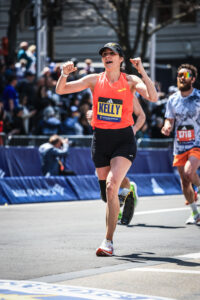
And yet, my time of 3:17:56 AT BOSTON tells a different story.
Some background for those reading who don’t run a lot of marathons. The Boston marathon is not known for being a fast course. While it’s ultimately a net downhill course, the perfectly stacked triple hills in the town of Newton that finish with a steady climb up the infamous Heartbreak hill, are notorious for breaking the best of marathon runners.
So, I would argue that setting a solid personal record on this course at an age when most athletes are retiring their running shoes is a testament to my training, but even more importantly, the emphasis on supporting my training with optimal lifestyle practices for enhanced recovery.
While it’s true that our bodies change as we age, I’ve discovered that with the right approach to training, recovery, and mindset, you can continue to excel well into our 40s and beyond. This journey has taught me that age is just one factor among many that influence performance, and while you can’t change your chronological age, you can control your biological age.
Challenging the Age Narrative
Most people automatically assume that the older you get, the slower you get. But this doesn’t have to be true. Yes, every day our cells are aging, but with proper care, we can support our recovery and performance in ways that weren’t available to previous generations of athletes.
The science is increasingly showing that many aspects of aging that affect performance can be mitigated through intentional practices. What I’ve found is that wisdom and experience can actually give masters runners an edge when it comes to training efficiency and race execution. Even better, science shows that running actually slows the effects of aging.
Why We Typically Slow Down With Age
The conventional wisdom about aging and performance isn’t entirely unfounded. Several physiological changes typically occur as we age that can impact running performance:
Declining VO2 Max
After age 30, most people experience a gradual decline in maximum oxygen uptake (VO2 max) of about 1% per year. Thisaffects our body’s ability to deliver oxygen to working muscles, which directly impacts endurance performance.
Muscle Mass Changes
We naturally lose muscle mass (sarcopenia) and fast-twitch muscle fibers with age, affecting both strength and power. By our 40s, many runners notice a decrease in explosive speed and hill-climbing ability.
Recovery Capacity
Cellular repair mechanisms become less efficient, leading to longer recovery times between hard efforts. This can limit training volume and intensity if not properly managed.
Hormonal Shifts
Changes in growth hormone, testosterone, and other key hormones affect everything from muscle protein synthesis to energy levels during training.
Tendon and Joint Changes
Tendons and ligaments become less elastic, and joint cartilage thins, potentially affecting running economy and increasing injury risk.
However, I’ve learned that understanding these processes allows us to target them specifically in training and recovery protocols. The decline isn’t inevitable—it’s simply a challenge to be addressed strategically.
Biological Age vs. Chronological Age
While my birth certificate says I’m 41, I’ve become fascinated by the concept of biological age—how old my body actually is at the cellular level. Biological age measures how well your body functions compared to chronological norms and can differ significantly from the number of candles on your birthday cake. Several testing methods now allow athletes to assess their biological age:
- DNA methylation tests like GlycanAge and Horvath’s Clock analyze epigenetic markers to determine how lifestyle factors have affected your aging process.
- Telomere length testing examines the protective caps on your chromosomes, which naturally shorten with age but can be preserved through healthy habits.
- Blood biomarker panels measure inflammatory markers, hormones, and metabolic indicators that reflect physiological aging.
- Even simple physical assessments like VO2max testing, grip strength, and reaction time can provide insights into functional biological age.
Prioritizing Recovery: The Master Runner’s Secret Weapon
As I’ve gotten older, I’ve come to appreciate that recovery isn’t just something you do after training – it’s equally important as the training itself. Here’s how I’ve optimized my recovery to support peak performance:
Sleep
I prioritize 8-9 hours of quality sleep every night. Sleep is when your body repairs muscle tissue and consolidates training adaptations. I track my sleep metrics and have developed a consistent pre-sleep routine that includes limiting screen time and keeping my bedroom cool and dark. It also includes limiting afternoon caffeine, which is more impactful than it was in my younger years.
Stress Management
Chronic stress releases cortisol that interferes with recovery and can lead to injury. I’ve incorporated daily meditation, regular disconnection from technology, and designated friend and family time to keep stress levels in check. These practices have been game-changers for my recovery.
Nutrition
My nutrition focuses on whole foods that support recovery – plenty of protein for muscle repair, complex carbohydrates to replenish glycogen, and nutrient-dense vegetables for their anti-inflammatory properties. As important as it is to prioritize intake of whole foods, I put equal emphasis on limiting processed and ultraprocessed foods, foods and drinks known to contain dyes (I’m looking at you Gatorade) and food sources high in vegetable and seed oils.

Hydration
Proper hydration supports every physiological process. I track my daily fluid intake and make adjustments based on training volume and weather conditions. Electrolyte balance has become increasingly important as I’ve aged, and I pay special attention to maintaining it.
Supporting Your Body
Beyond basic recovery principles, I’ve found several specific strategies that have helped my body perform at its best despite the additional years:
Tactical Recovery Methods
I incorporate targeted recovery modalities like contrast therapy (alternating hot and cold), compression garments after long runs, and regular massage therapy. These methods help reduce inflammation and improve circulation to healing tissues.
Nutrition Beyond the Basics
I’ve found specific nutrients that support my performance as a masters athlete:
• Omega-3 fatty acids to combat inflammation
• Protein timing strategies for enhanced muscle protein synthesis
• Antioxidant-rich foods to combat oxidative stress
Supplements
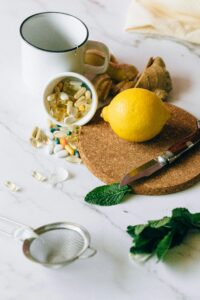
After significant research and lifestyle adjustments, I’ve incorporated the following supplements to support my health, recovery and performance.
- Alpha lipoic acid for its anti-inflammatory properties and effects on blood sugar
- Beta alanine as a lactic acid buffering agent to increase muscle endurance and reduce muscle fatigue
- Collagen peptides to support joint health
- Vitamin D for immune function and bone health
- Vitamin C and E to reduce oxidative stress
- Tart cherry juice for its natural anti-inflammatory properties
Supporting Your Mind
Physical training is only part of the equation. Mental strength becomes increasingly important as we age.
Mindfulness Practice
Regular mindfulness practice has improved my ability to stay present during difficult training sessions and tough race moments. I was able to power up Heartbreak hill fully aware that my quads were burning without letting it derail my pace as I transferred my focus t what felt good and the upcoming downhill reprieve I knew was nearly in sight.
Positive Self-Talk
Mantras and mental cues can help you push through difficult efforts that arise during a workout, race or in life. During the Boston marathon, “you’ve got this KB” became my mental anchor when hints of fatigue started to set in.
The Power of Breathwork
Another transformative addition to my training has been structured breathwork.
Nasal Breathing Training
Incorporating nasal breathing during easy runs has improved my CO2 tolerance and breathing efficiency. This translates to better oxygen utilization during races.
Breathing for Recovery
Post-workout breathing exercises help activate my parasympathetic nervous system, speeding recovery and reducing stress hormones. Simple box breathing (4-count in, 4-count hold, 4-count out, 4-count hold) has become part of my daily routine.
Race-Day Breathing Strategies
During the marathon, I used rhythmic breathing patterns synchronized with my cadence to maintain efficiency and focus, especially during the closing miles when form typically deteriorates.
Take Away
Crossing the finish line on Boylston Street with a personal best marathon time of 3:17:56 after setting a 5k personal best of 21:22 just 2 days prior was validation of this holistic approach. What struck me most wasn’t just the time on the clock, but how much stronger I felt throughout the race compared to marathons in my 30s.
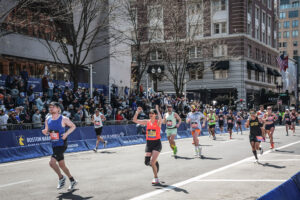
While my younger self might have had naturally faster recovery, my 41-year-old self has wisdom, patience, and a comprehensive system for maintaining peak performance. The Boston Marathon showed me that with the right approach, our “peak” years as runners can extend far beyond what conventional wisdom suggests.
Age does change us, but it doesn’t have to slow us down. By adapting our training, recovery practices, and mindset, we can continue to surprise ourselves – and others – with what’s possible in our 40s and beyond.

